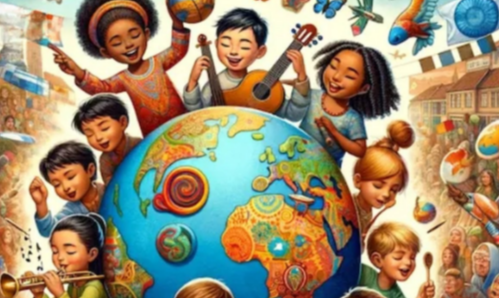Raising Global Citizens: Cultural Exposure for Bilingual Kids

Teaching a child a second language is a remarkable gift that opens up new avenues of communication. However, language is much more than just words and grammar; it is a gateway to culture. For bilingual children, pairing language skills with cultural exposure transforms them from speakers into true global citizens. It provides context, deepens understanding, and fosters an appreciation for the diversity that makes our world so rich.
Connecting language learning with cultural experiences helps children see their skills as a bridge to connect with people, traditions, and new perspectives. This holistic approach enriches their education and personal growth, preparing them for an increasingly interconnected world.
Why Culture Is a Key Part of Bilingualism
Language does not exist in a vacuum. It is deeply intertwined with the traditions, values, history, and social norms of the people who speak it. Exposing bilingual children to these cultural elements offers several significant benefits.
Building Deeper Connections
When children learn about the holidays, food, music, and stories associated with a language, the words they are learning come to life. This connection makes the language more meaningful and relevant to them. For example, learning Spanish becomes more engaging when a child also learns about celebrations like Día de los Muertos or tries traditional foods. This context helps them understand not just what to say, but the cultural significance behind the words.
Enhancing Empathy and Open-Mindedness
Cultural exposure helps children develop empathy and an open mind. By learning about different ways of life, they begin to understand that their own perspective is just one of many. This realization discourages prejudice and encourages curiosity. Children who appreciate different cultures are more likely to become compassionate and inclusive adults who can navigate diverse social and professional environments with ease.
Strengthening Language Retention
Connecting language with positive cultural experiences can significantly boost a child’s motivation to keep learning and using their second language. When language is part of fun activities like cooking a new dish, listening to new music, or celebrating a festival, it becomes a source of joy rather than just an academic exercise. This positive reinforcement is crucial for long-term language retention.
Practical Ways to Introduce Cultural Experiences
Integrating cultural exposure into a child’s life does not require expensive travel. Meaningful experiences can be created right at home and within your local community.
Explore Through Food and Music
The kitchen is a fantastic classroom. Try cooking simple, traditional recipes from cultures that speak your child’s second language. As you cook, you can talk about the ingredients and the role the dish plays in that culture. Similarly, music is a universal language. Create playlists of songs from different countries and genres. Dance, sing along, and discuss what the lyrics mean and the instruments you hear.
Celebrate Festivals and Traditions
Look up major cultural holidays and find simple ways to celebrate them. This could involve making a traditional craft, reading a story about the celebration, or watching a documentary. These activities provide a tangible link to the cultural calendar and help children understand the values that are important to different societies. For example, many communities offer programs that combine learning with cultural activities, such as a Spanish immersion in San Antonio that might incorporate local history and festivities into its curriculum.
Use Media and Literature
Books, films, and television shows are excellent resources for cultural exploration. Find children’s books written by authors from different backgrounds or that tell stories from other parts of the world. Watch foreign-language films with subtitles to expose your child to different accents, settings, and social norms. These resources provide a window into the daily lives and histories of others.
Connect with Community
Seek out local cultural centers, festivals, or community groups. Attending these events provides an authentic and immersive experience. It also offers opportunities for your child to interact with native speakers in a natural setting, which can build their confidence and conversational skills.
By intentionally pairing language learning with cultural education, you give your child a more profound and lasting skill. You are not just teaching them to speak another language; you are helping them develop a global mindset that will serve them for a lifetime.



